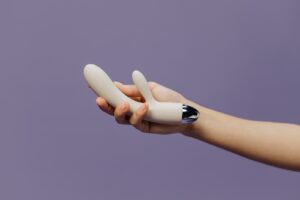When trying to conceive, it is important to know when you are most fertile. This is usually done by using an ovulation predictor kit or other fertility tracking methods like basal body temperature and cervical mucus.
Ovulation usually occurs 12-24 hours after an LH surge is detected on a urine-based ovulation predictor test. This is known as the fertile window.
Wait a Day
If you want to get pregnant, the best time for sex is within the next two days of when your ovulation predictor turns positive. This is when your fertility is at its peak and you have the highest chance of conception. Ideally, you should have sex the day your ovulation predictor turns positive and for the rest of that same day (if possible).
Ovulation tests, also known as ovulation predictor kits, detect a surge in luteinizing hormone in the urine. The LH spike typically occurs 24-36 hours before ovulation. It triggers the ovary to open and release an egg. The egg then has a short window of opportunity to be fertilized. The sperm must meet the egg within that window, or they will die.
Ovulation prediction is important because a majority of pregnancies result from sex that takes place during the fertile window. The goal is to conceive as soon as an ovulation surge is detected, which can be done by tracking the onset of physical symptoms such as cervical mucus and basal body temperature or by using a fertility awareness tracker app. Having unprotected sex every day or at least every other day until an LH peak is detected gives the most sperm the chance to fertilize the egg. However, many women don’t ovulate on the predicted day, so if you miss your window, it is still important to continue sexual activity for the remaining days of the ovulation window.
Wait a Week
When you’re trying to conceive, getting the timing of your sex right is essential. A single sperm can be fertilized by an egg in a short window of time, and the best way to predict that window is with a fertility app or ovulation tracker.
Ovulation trackers use a strip that looks similar to a pregnancy test but tests for a surge of luteinizing hormone (LH) in the urine instead of human chorionic gonadotropin (hCG). Because LH levels rise just before ovulation, a positive result on an OPK means you’re at the peak of your fertile window and will likely ovulate within the next 24 hours.
If you’re using a OPK and aren’t sure why you’re getting a false negative, try testing again in 12 hours or so, suggests OB-GYN Sherry Ross. You can also have sex two to three times per week to increase your chances of ovulation.
If you’re tracking your ovulation without a kit, look for changes in cervical mucus and basal body temperature as a sign of your LH surge. However, it’s important to note that not all women have reliable menstrual cycles. This may mean you have to wait a few days for your fertile window to begin, especially if you’re experiencing abnormal menstrual cycles or are dealing with polycystic ovary syndrome.
Wait a Month
The key to getting pregnant is timing, which can be challenging if you’re trying for a baby. Luckily, there are many apps and ovulation predictor kits to help you get the timing right. A positive ovulation test means that you’re at your most fertile point of the cycle.
Ovulation prediction kits work by detecting a surge of the hormone luteinizing hormone (LH) in your urine. This usually happens 24 to 36 hours before ovulation, so the kit can help you know when you’re most likely to conceive (2). You can also track your ovulation using physical symptoms or by tracking your basal body temperature with an app.
When you use an ovulation predictor, make sure to follow the instructions exactly. If you take the test too early, the results may be inaccurate (3). Also, certain medications can skew the results, including paracetamol and any drugs containing human chorionic gonadotrophin (hCG), which is the pregnancy hormone (4).
Once you have a positive ovulation test, the most important thing is to start having sex on the day it turns positive and for the next three days in a row (5). This is because the egg only survives for about 24 hours after ovulation, and it’s best to give sperm plenty of chances to meet it. If you’re using an ovulation predictor, make sex part of your daily routine to increase your chances of pregnancy.
Wait a Year
If you have been trying to conceive, you know that timing is everything. And while all it takes is one sperm to get pregnant, there are many ways that you can try to optimize your chances of success, including tracking your cycle and using fertility apps or ovulation predictor kits.
Ovulation predictor kits are urine tests that detect a surge in luteinizing hormone (LH), which occurs 24 to 48 hours before ovulation. When LH levels are highest, it’s known as your “fertile window.” During this time, you have the best chance of getting pregnant from conception.
You can also track your ovulation without an OPK by monitoring physical symptoms like cervical mucus or basal body temperature, or by using an app that takes into account your previous cycles and presumed ovulation dates. But even with all these methods, there’s no guarantee that you will ovulate on the day that your OPK first turns positive. It could happen as early as 14 hours later, so it’s best to have sex the day of and the days leading up to your ovulation date.
In fact, a study found that a woman’s chances of pregnancy are highest on the day immediately before ovulation, so having sex as soon as you have a positive OPK can give you the best chance of becoming pregnant. Just be sure to test every 12 hours not 24 when testing, as the window for fertile is only about three days.
See Also:






